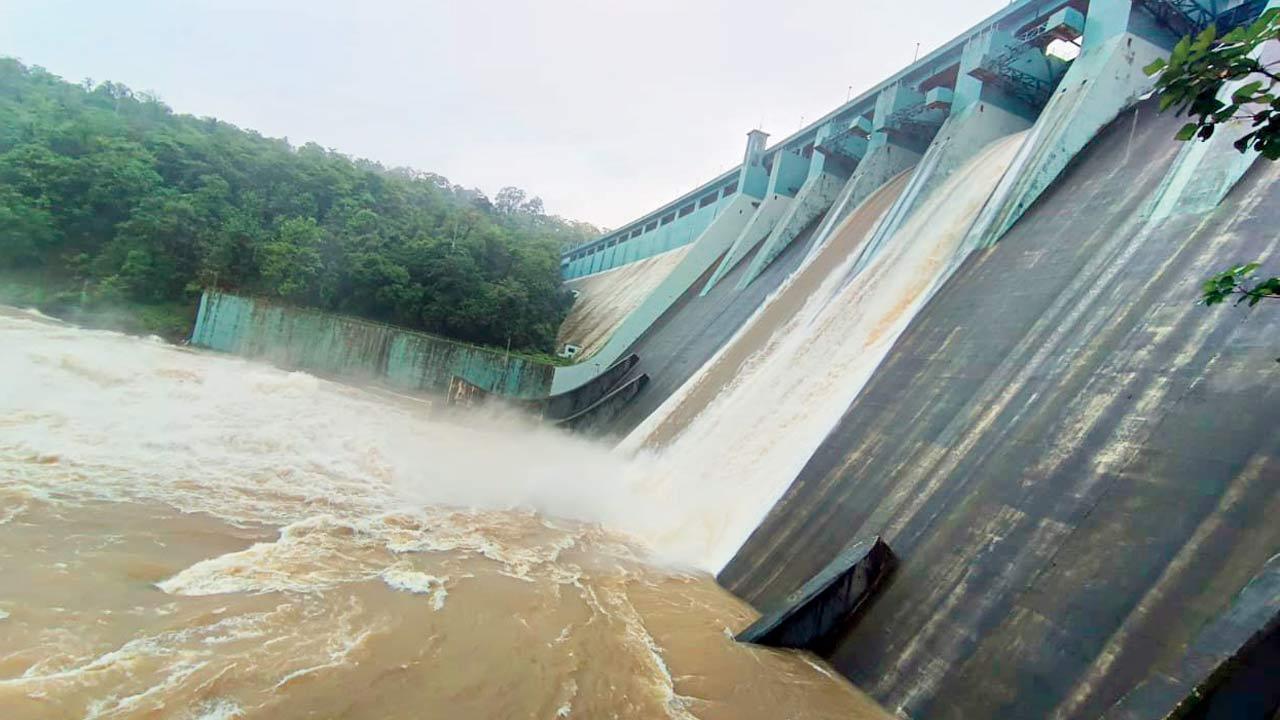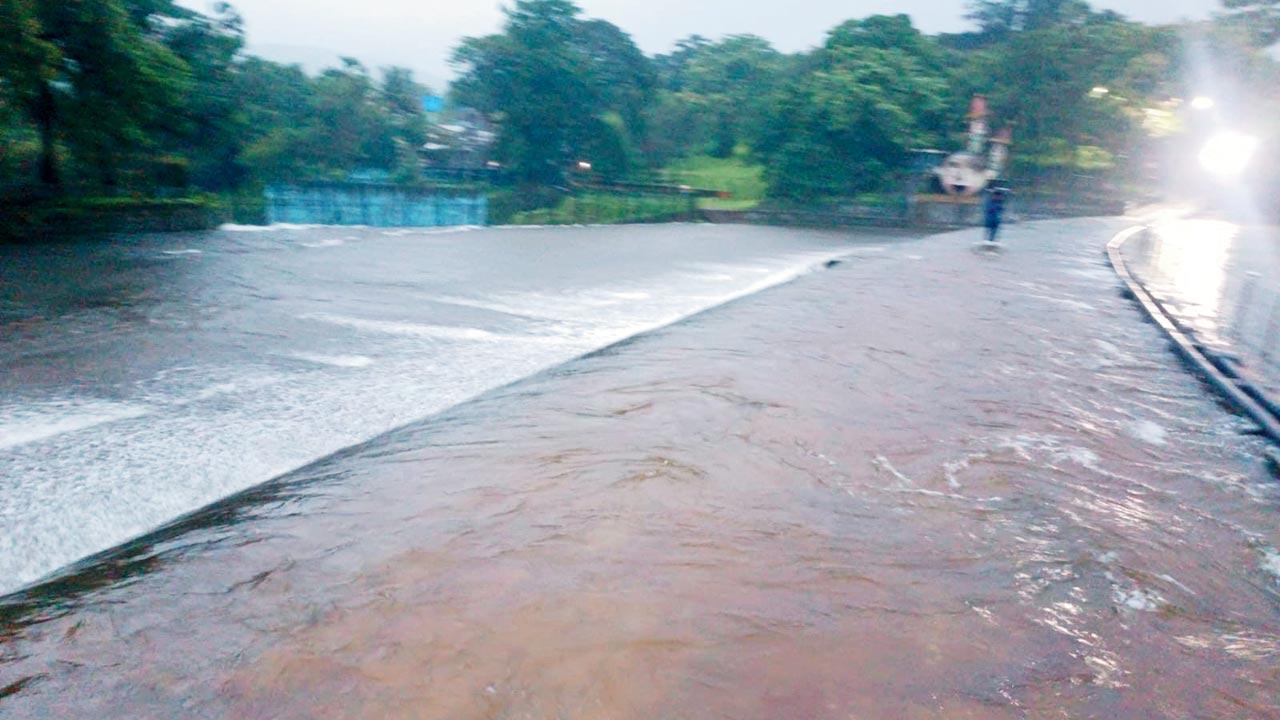Navi Mumbai environmentalists allege that not desilting lakes and reservoirs leads to inaccurate data on water capacity; that explains why we suffer water cut in summer even after lakes overflow in the monsoon

Modak Sagar overflowed on July 25
The Brihanmumbai Municipal Corporation (BMC) has acknowledged that no desilting has been carried out at its main drinking water lakes and reservoirs for the past 10 years. Navi Mumbai-based environmentalists have alleged that this leads to inaccurate data on water capacities in the reservoirs.
ADVERTISEMENT
BN KUMAR of NatConnect Foundation filed an RTI application with the State Urban Development Department (UDD) to learn the status of the desilting done by the BMC. This inquiry was made because the city tends to face water cuts in the summer months despite dams and lakes overflowing during the
monsoon season.
 Vihar lake began overflowing on July 25
Vihar lake began overflowing on July 25
In reply to the RTI, the Brihanmumbai Municipal Corporation (BMC) stated that there was no desilting done at Vihar, Tulsi, Modak Sagar, Tansa and Middle Vaitarna over the past decade.
“The BMC has not provided any update on the desilting of the remaining two lakes, Bhatsa and Upper Vaitarna. Together with the other five lakes and reservoirs, these water bodies supply a total of 3.4 million litres of drinking water to the city every day,” Kumar said.
“To our utter shock, the UDD informed us that it does not have any such record. The state headquarters ought to monitor essential services such as the drinking water supply. They are supposed to plan the usage of these resources as cities are rapidly expanding,” Kumar said.
The MCGM Hydraulic Engineer’s Department at Kapurbawadi, Thane, confirmed the incident, saying, “As per this office’s records, no desilting work was done in the lakes/reservoirs of Modaksagar, Tansa and Middle Vaitarna in the last ten years.”
Supporting the need to desilt the lakes, Nandakumar Pawar, head of environment-focused NGO, Shri Ekvira Ari Pratishtan, said, “The absence of desilting is one of the main causes of overflowing of dams and the resultant floods in rivers. The sludge collected from the bottom of reservoirs is rich in minerals and it could be used to strengthen the topsoil of farmlands.
“Erosion of topsoil is one of the major problems the agricultural fields are facing, and this dredged soil could be of great help to
mitigate the crisis,” he added.
Kumar and Pawar have called upon the government to appoint a high-level expert committee with hydraulic engineers and farm experts to study the situation and suggest an action plan.
NatConnect has written to the chief minister urging him to take all stakeholders into confidence.
3.4 million litres
Daily water supply to the city
 Subscribe today by clicking the link and stay updated with the latest news!" Click here!
Subscribe today by clicking the link and stay updated with the latest news!" Click here!







